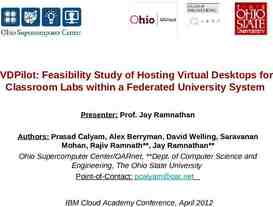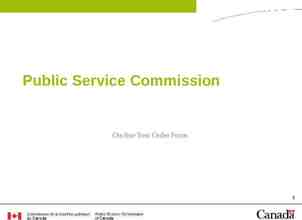Preparing for the COVID-19 Pandemic Carlos del Rio, M.D. Distinguished
34 Slides7.42 MB

Preparing for the COVID-19 Pandemic Carlos del Rio, M.D. Distinguished Professor of Medicine, Global Health and Epidemiology Executive Associate Dean for Emory Univ. School of Medicine at Grady Memorial Hospital March 19, 2020 *worldwide spread of a new disease that affects large numbers of people

COVID-19 COronaVirus Infectious Disease 2019 Coronaviruses are a large family of viruses that can infect many animals Named for the crown-like spikes on surface COVID-19 is a new coronavirus infection Discovered in December 2019 in Wuhan, China Coronavirus family includes viruses that cause the common cold, as well as SARS and MERS Although most COVID-19 infections are mild, severe pneumonia and even death can occur Natural host for many coronaviruses are bats Because COVID-19 is new, a lot is not known

Seven Human Coronaviruses (HCoVs) Common HCoVs: HCoV-229E (alpha) HCoV-OC43 (alpha) HCoV-NL63 (beta) HCoV-HKU1 (beta) Other HCoVs: SARS-CoV (beta) MERS-CoV (beta) COVID-19* (beta) *Coronavirus Disease - 2019 Produced by the National Institute of Allergy and Infectious Diseases (NIAID), this highly magnified, digitally colorized transmission electron microscopic (TEM) image, reveals ultrastructural details exhibited by a single, spherical shaped, Middle East respiratory syndrome coronavirus (MERS-CoV) virion.

Current Status of the COVID-19 Outbreak Global case numbers: 200,000 cases; 100 countries & 8,000 deaths https://gisanddata.maps.arcgis.com/apps/opsdashboard/index.html#/bda759 4740fd40299423467b48e9ecf6 US case numbers: 7,200 cases and 117 deaths (but significant under testing) https://www.cdc.gov/coronavirus/2019-ncov/cases-in-us.html Georgia Cases: 197 cases and 3 deaths

COVID-19 Cases in US as of March 18, 2020 https://www.nytimes.com/interactive/2020/us/coronavirus-us-cases.html

CoVID-19 in Georgia 2000 1795 1800 1600 1400 1275 1200 1000 895 800 635 600 Current Status 445 400 359 315 255 220 200 0 0 210 0 210 1 215 1 320 2-Mar 3-Mar 4-Mar 5-Mar 6-Mar 2 010 35 34 7-Mar 55 47 8-Mar 85 11 6 110 517 155 922 1331 1944 63 26 89 38 127 52 179 76 104 9-Mar 10-Mar 11-Mar 12-Mar 13-Mar 14-Mar 15-Mar 16-Mar 17-Mar 18-Mar Diagnoses Cumulative UNDIAGNOSED

COVID-19 Transmission Respiratory secretions - main mode of transmission Spread through respiratory droplets in the air and that land on surfaces Transmission from people before onset of symptoms or without symptoms possible but contribution off these infections appears to be small Stool – unlikely to be a source Perinatal – no transmission observed Tang JW et al, J Hosp Infect 2006; 64:100-14.

Signs and Symptoms of COVID-19 No particular signs and symptoms can discriminated COVID-19 from other respiratory infections such as influenza

Clinical Course of COVID-19 Incubation period is 5 days (range 2 – 14 days) 80 % have mild illness ( 80%) fever (83 – 98%) cough (76 – 82%) myalgia or fatigue (11 – 44%) 30% of hospitalized patients required intensive care 5-10% require mechanical ventilation No approved medication NIH clinical trials have started Supportive care has been very successful for most patients

COVID-19 Mortality

How does COVID-19 Compare to Influenza Influenza COVID-19 Biology Enveloped RNA virus Common in many bird/animal species Enveloped RNA virus Common in many animal species Symptoms Fever, cough body aches Mild-severe Fever cough, body aches Mild-severe, pneumonia more common Transmission Incubation When does infection occur Droplets/contact 2-5 days Seasonal, fall-winter Droplets/contact, maybe airborne Usually about 5 days, range 1-14 Unknown How contagious Each case causes 1.3 others on average Uncertain but likely more than flu Who is most at risk Elderly, chronically ill and pregnant women Elderly and chronically ill, men in China Treatment Antivirals helpful if started early No specific treatments Vaccine Yes! Moderately effective No Number of infections About 1 billion annually worldwide 20-50 million in US each year 125,000 cases as of March 10, 2020 Deaths 300,000-600,000 annually worldwide 20,000-50,000 in US 4,600 so far worldwide

Testing for COVID-19 Testing by detecting RNA of virus Nasopharyngeal swab and Throat swab Lower respiratory sample if possible Until recently only available at CDC Now available in most state laboratories (GA DPH now has it) Commercial lab (Quest, LabCorp, ViraCor) are now available Laboratory Developed Test being developed by many including Emory Time from sample acquisition to test result is still longer than desired Still needed: ability to obtain testing without coming to hospital or busy clinic

Unknowns about COVID-19 How contagious is the virus and exactly how is it transmitted Optimal personal protective equipment How long will the pandemic last Effect treatments When a vaccine will be available One thing we can say for sure – expect recommendations to change as we learn more and as the situation evolves

National Preparedness

Identify, Isolate and Inform IDENTIFY ISOLATE INFORM

Preparedness and Response Framework for Pandemics Find cases (has been a challenge with limited testing) Isolate Contact tracing with quarantine Don’t look for all cases Stay home when ill Social separation

Quarantine vs. Isolation Quarantine To separate and restrict the movement of well persons who may have been exposed to a communicable disease Monitor to see if they become ill These people may have been exposed to a disease and do not know it, or they may have the disease but do not show symptoms. Quarantine can also help limit the spread of communicable disease. Isolation To separate ill persons who have a communicable disease from those who do not have that disease Restricts the movement of ill persons to help stop the spread of certain diseases Example: Isolation for patients with infectious tuberculosis https://www.hhs.gov/answers/public-health-and-safety/what-is-the-difference-between-isolation-and-quarantine/index.html

Travel Restrictions

Healthcare, School, Business and Personal Preparedness

Preparing your healthcare system Review your facility emergency plan Create an emergency contact list Communicate about COVID19 with staff and patients Protect your workforce Screen patients and visitors for symptoms of acute respiratory illness Ensure proper use of Personal Protective Equipment (PPE) Conduct an inventory of available PPE Encourage sick employees to stay home Separate patients with respiratory symptoms so they are not waiting with other patients Consider strategies for patients to stay home https://www.cdc.gov/coronavirus/2019-ncov/healthcare-facilities/steps-to-prepare.html

American Hospital Association “Best Guess” for COVID19 over next 2 months in US COVID19: 96,000,000 infections 4,800,000 hospitalizations 1,900,000 ICU admissions 480,000 deaths Influenza in 2019-2020: 35,000,000 infections 490,600 hospitalizations 49,000 ICU admissions 34,200 deaths “Prepare for the worst and hope for the best”

COVID19 estimates vs Flu in Atlanta (if no aggressive interventions are done) Cases * Medical Visits ** Hospitalizations *** ICU Beds**** Deaths ***** Deaths among 65 population # FLU (Estimate annual FLU Actual data) 2018-19 1,380,265 648,725 24,845 8,282 1,380 1,540 1,035 Low COVID-19 Estimate 53,087 5,309 2,654 1,327 265 212 Mid-COVID-19 High COVID-19 Estimates Estimate 106,174 1,380,265 31,852 690,132 10,617 276,053 5,309 138,026 1,062 27,605 849 22,084

PPE for Novel Coronavirus 1. Face Shield 2. N95 Respirator 3. Isolation Gown 4. One pair of gloves https://youtu.be/bG6zISnenPg

Preparing your business and employees Empower employees to stay home when sick Remote work and communication solutions Review human resources policies, workplace and leave flexibilities Review pay and benefits available to encourage appropriate sick leave Encourage good hand hygiene Alcohol based hand sanitizer at high touch areas (water/coffee dispensers) Prepare for wide-spread outbreaks Social distancing (school/daycare closures, restriction on gatherings) Travel restrictions from government or other agencies Absenteeism Develop Enterprise-wide Bio-preparedness (Pandemic) Plans https://www.cdc.gov/coronavirus/2019-ncov/community/guidance-business-response.html

Preparing your school or university Emphasize preventive actions for students and staff Staying home when sick Hand and respiratory hygiene Review and prepare with student and occupational health Information-sharing systems with staff, students, and partners. Review emergency operations plans in case of outbreak on campus Prepare for temporary class suspension and event/activity cancellation Use of virtual classrooms? Prepare for on campus quarantine Ensure availability of nutrition and medication Ensure continuity of education and research https://www.cdc.gov/coronavirus/2019-ncov/community/guidance-ihe-response.html

Preparing your family and your home Re-enforce prevention Hand and respiratory hygiene Vaccinations Appropriate cleaning of high touch areas Avoid sick individuals if possible Develop a family preparedness plan Prepare to stay at home if sick Prepare for social distancing (school closures, work closures, etc) Separate room for family member who is sick Have medications and other needs ready Supply of “chicken soup”

Non-pharmacologic measures Border screenings/closures Little value at this point Mass gatherings Important to prevent them – may have significant impact on conferences and sporting event In Atlanta the NCAA Basketball final 4 and the Decennial Conference in Infection Prevention Public transportation Potential place for spread School closures Have to be implemented early to have impact Isolation of infected Critically important, need testing to identify those infected!

Goals of Mitigation Strategies Minimizing morbidity “Flattening” the epidemic curve to avoid overwhelming healthcare services Keeping impact on economy manageable Slowing progression of epidemic to allow for vaccine and other treatment development

Social Distancing “To limit the spread in the community we need to spread the community”

Social Distancing and Personal Hygiene Stay home if sick Notify MD office before visit Limit movement Limit visitors At least 2 weeks supply of medications and food Early Stay home if sick Hand hygiene Mild-moderate Reduce large gatherings Reduce mixing Consider distance learning Substantial Distance learning Closure Early Stay home if sick Hand hygiene telework Mild-moderate Reduce meetings Stagger schedules Limit travel Substantial Telework Cancel travel and conferences

Prevention advice you can use:

What about masks? Surgical mask: Meant to protect the environment from the wearer (designed to keep the surgeon’s respiratory pathogens away from a patient) Does a good job of trapping large droplets and some aerosols Respirator (N95 Mask): Fits tighter to the face and is meant to help protect the wearer from inhaling droplets in the environment

Questions?







